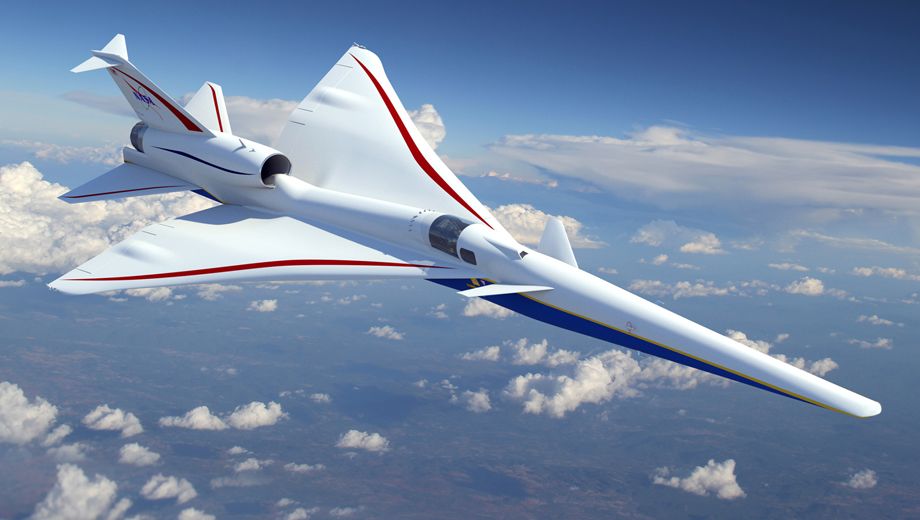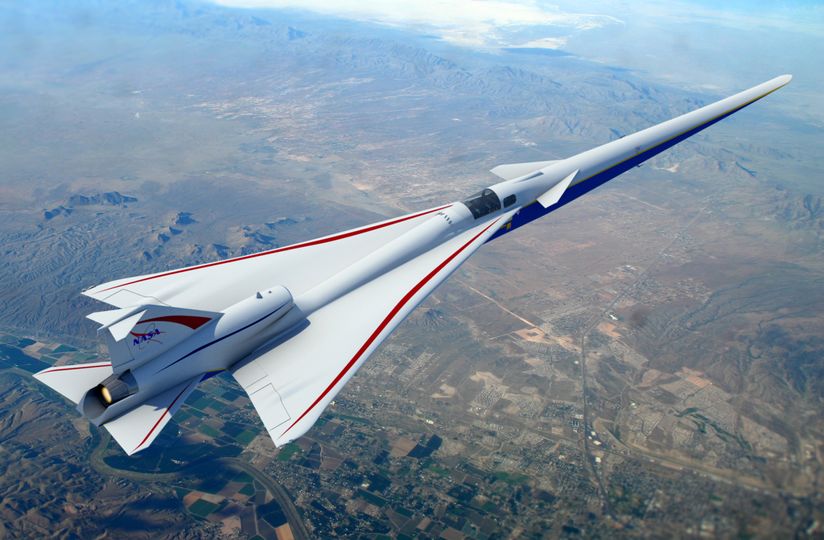NASA's 'X-plane' supersonic jet promises more zoom, less boom

An experimental supersonic 'X-plane' developed by NASA will take flight in 2021 with a top speed of almost 1,600km/h but create a sound "about as loud as a car door closing," the agency promises.
Business jets are expected to be first adopters of the design, a prototype of which will be constructed by defense contractor Lockheed Martin in a deal worth A$320 million.
The needle-nosed jet will have a top velocity of 1.5 times the speed of sound, or about 990 miles per hour (1,600 kilometers) at an altitude of 55,000 feet, Lockheed said Tuesday. While the jet will only have room for a pilot, it will test design principles that soften the sonic boom.
The plane “joins the annals of other historic X-planes in history that have pushed back the frontiers of aviation technology, science, innovation,” David Richardson, a director at Lockheed’s Skunk Works unit, said at a press conference with NASA in Washington.
The partners are seeking to foster technology that can overcome noise restrictions on supersonic flight, which has been banned overland for civil aircraft since 1973.
Once tested for safety, the plane will be ready to fly over select communities to get feedback on the impact. The ultimate goal: opening the skies to faster jet travel and spurring manufacturers to build speedier aircraft.
The Concorde, the supersonic airliner that began service in 1976, was built by a French-British coalition and flown by Air France and British Airways until it was discontinued in 2003 – in part because noise complaints limited its flights.
Photo gallery: reliving the British Airways Concorde dream
Lockheed’s experimental plane will be designed to mitigate the shock waves emanating from the nose, wings, engine and other protruding areas of the plane when the sound barrier is broken.
The aircraft will use existing parts, such as the landing gear from an F-16 Fighting Falcon and the pilot seat from a T-38 Talon, and will measure 94 feet long with a wing span of 29.5 feet.
“It’s about the data that will be collected. It’s that data that is used then to shape the future,” Richardson said.
“We’re very confident as we go forward from here in the design that we have, and being able to achieve that low-boom signature.”
NASA expects private business jets to be the first type of supersonic aircraft to have commercial success if the ban on overland flight is lifted. Large passenger airliners that break the sound barrier probably won’t show up until after 2035, according to NASA’s vision.
Aerion, a business jet startup backed by Texas billionaire Robert Bass, is already working on a design that would fly overland just under the speed of sound and then speed up to Mach 1.4 over the ocean.
Boom Technology is developing a supersonic passenger jet with 45 to 55 seats, and attracted a US$10 million investment from Japan Airlines in December, however Gulfstream has said it won’t attempt to build a supersonic aircraft until it’s cleared to fly open-throttle over land and sea.
Also read: The supersonic Qantas jet which would have flown to Singapore in 3 hours



30 Jul 2015
Total posts 105
LMAO!! NASA? That is all I have to say.
Hi Guest, join in the discussion on NASA's 'X-plane' supersonic jet promises more zoom, less boom